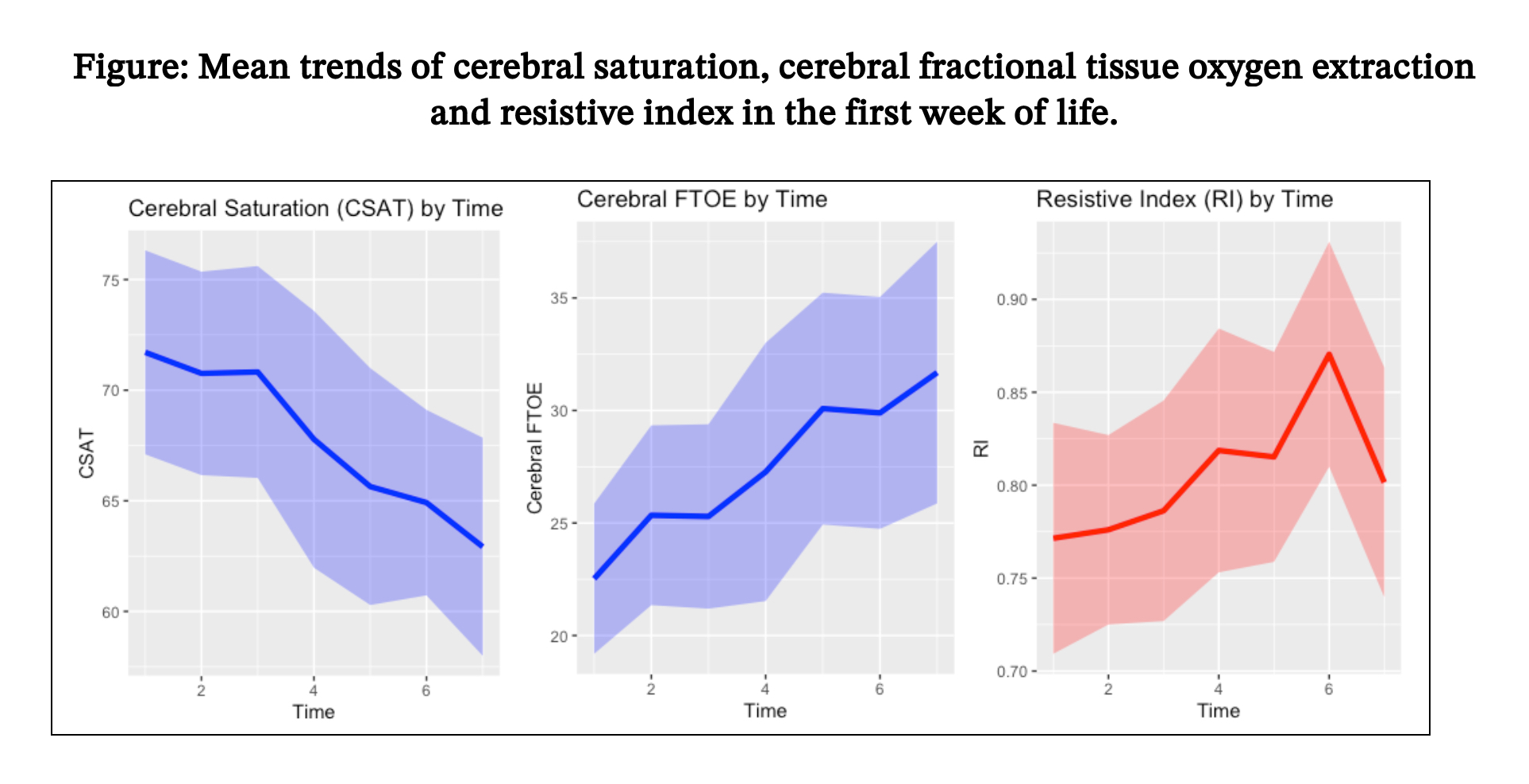Neonatology
Session: Neonatal Cardiology and Pulmonary Hypertension 4: Congenital Heart Disease
171 - Resistive index values of the anterior cerebral artery are associated with the instantaneous levels of cerebral saturation in newborns with congenital heart defects
Monday, May 6, 2024
9:30 AM - 11:30 AM ET
Poster Number: 171
Publication Number: 171.3026
Publication Number: 171.3026

Pasinee Kanaprach, MD (she/her/hers)
Fellow of Neonatal Hemodynamics
McGill University Faculty of Medicine and Health Sciences
Montreal, Quebec, Canada
Presenting Author(s)
Background: The resistive index (RI) of the anterior cerebral artery (ACA), measured using Doppler ultrasound (US), is a parameter describing blood flow. Cerebral saturation (CSat), measured through near-infrared spectroscopy (NIRS), provides an estimate of venous-weighted oxygen saturation. The cerebral fractional tissue oxygen extraction (FTOE) reflects the relationship between oxygen delivery and consumption, based on the pre-ductal oxygen saturation (SpO2) at the time of CSat measurement. It is calculated as (SpO2 – CSat / SpO2).
Objective: We hypothesized that CSat/FTOE measurements at the time of ACA Doppler acquisition would be associated the ACA-RI.
Design/Methods: Prospective study recruiting newborns (≥35 weeks) with significant CHD requiring post-natal intensive care. We excluded preterm infants, those with significant genetic, syndromic or brain anomalies. Doppler US were performed daily from day 1 to 7 (or until discharge/intervention). CSat and pre-ductal SpO2 were continuously monitored, and values were retrieved at the exact time of the ACA Doppler. Data extractor from the US were blinded to the NIRS values. Graphics for trends and mixed effect models (random slope/intercept) were constructed using RStudio.
Results: We collected 142 data points for cerebral saturation and the resistive index and 140 data points for the cerebral FTOE-resistive index pair during the first week of neonatal life from 34 patients out of an initial pool of 142 consecutively screened patients for eligibility. Among this cohort, 21 were male, accounting for 62% of the total. The mean birthweight was 3.2 (0.6) kg, and the average gestational age was 38.5 (1.4) weeks. Our mixed effect model demonstrated a significant association between CSat/FTOE and the time-corresponding RI of the ACA, with p-values of < 0.035 and 0.01, respectively. Specifically, a 2.4% decrease in CSat corresponded to a 0.1-point increase in ACA-RI (95% confident interval: -4.7; -0.2%), and a 3.1-point increase in cerebral FTOE (95% confident interval: 0.7; 5.5).
Conclusion(s): Within the first week of neonatal life, a significant association was established between the resistive index of the anterior cerebral artery and the time-corresponding cerebral saturation by near infrared spectroscopy, as well as the cerebral fractional tissue oxygen extraction in neonates with a congenital heart disease. Our data indicates that lower cerebral NIRS and higher cerebral FTOE correspond to higher instantaneous values of RI of the ACA.

.jpg)
